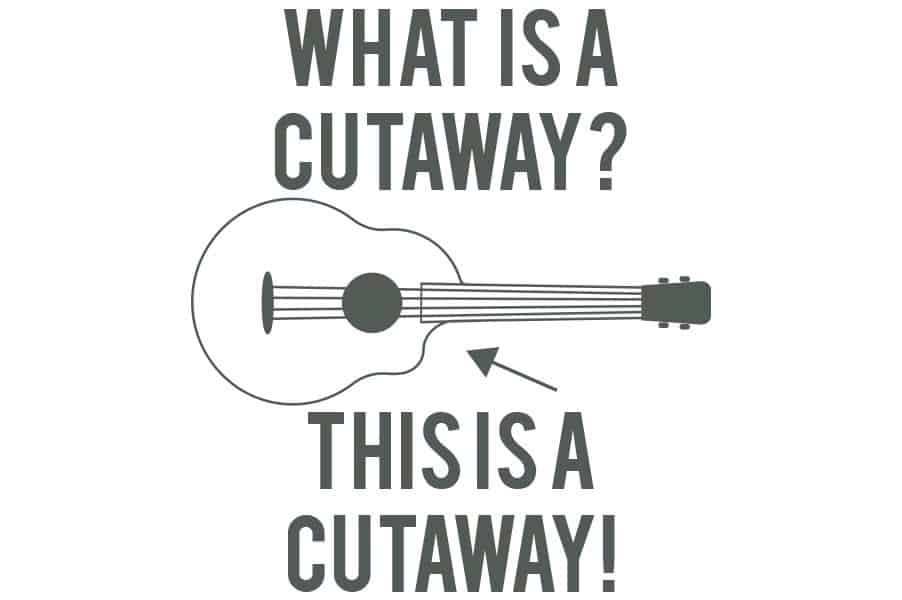The popularity of ukuleles has grown over the years which has helped usher in a variety of different types and models. The cutaway is a popular variation nowadays. But what is it and what does it do?
A cutaway ukulele is made so that a portion of the lower body curves inward under the kneck. The curve, known as the cutaway, allows for added room for one’s hand while playing the bottom frett positions making the highest notes more accessible.
The cutaway has been common and quite popular on guitars, especially electric guitars intended for playing the lead. With a standard body guitar, the lowest frets can be hard to access.
However, this usually isn’t the case on a soprano ukulele (smallest of the four standard sizes), as the frets tend to be pretty accessible. On the next three sizes (concert, tenor, baritone) the cutaway can help quite a bit as the fretboard is longer and tends to run further into the body. However, this is a highly debated topic in the uke world and often comes down to personal preference.
If you plan on playing rhythm and just want to strum and sing around the campfire, you probably won’t have much need for the cutaway. But if you’re mostly into lead or fingerpicking, then the cutaway could serve your purpose a bit better.

Does a Cutaway Impact the Sound?
From a scientific standpoint, changing the surface area of an instrument will impact the sound. In general, the larger the surface area the louder and fuller the instrument’s sound will be.
But, science is a funny thing, and what is true isn’t always observed. By that, I mean, just because it absolutely does make a difference in the instrument’s sound, doesn’t mean we will actually hear or notice the difference. A side by side comparison of a quality cutaway vs its twin without a cutaway tends to have no observable difference.
The one thing you might be able to notice is how loud the instrument is. I find that some cutaways that I’ve listened to have a very subtle difference in how loud they are compared to their counterparts. Again, so very subtle I might just be making up the difference in my head. 🙂
Does a Cutaway Ukulele Cost More?
In general, a cutaway will be on par with traditional body types when comparing price. The cost of ukuleles tends to follow the quality of their components more than body variations. In other words, what the ukulele and all the components on it are made of ultimately impacts the final price.
Do all Ukulele Sizes Have Cutaway Options?
Yes, you can get a cutaway on all four of the common sizes of ukuleles. The soprano, concert, tenor and baritone all have cutaway options. The soprano tends to have fewer models with cutaways, as it tends to be a more of an aesthetic thing. Given how small the body of a soprano is, you really don’t have a lot of surface area to trim off.
Are Cutaway Ukuleles Tuned Differently?
Cutaway ukuleles are exactly like any other ukulele except for the body having a cutaway for accessibility. This means that you will tune a cutaway ukulele in the same way that you tune any other. A soprano, concert, and tenor ukulele usually utilize gCEA reentrant tuning while the baritone uses GCEA linear tuning.
If you want more on reentrant vs linear tuning you can check out our blog post here.

